Genre: Sports Developer: Time Warner Int. Publisher: Time Warner Int. Players: 1-2 Released: 1994
If commercial television has taught us anything, it’s that one can never go wrong milking a catch phrase. “Awesome Baby!” may not sound like much of a catch phrase, nor the idea of merchandising a video game upon a TV commentator sound very wise, but Dick Vitale was and to some extent still is a notable college basketball personality. This is much needed in a sport where athletes are on the scene for a maximum of four years and even at the time this game was produced many of the bigger stars left for the pros a year or two sooner. Vitale also coached prior to broadcasting.
But let’s dispense with the backstory. Chances are you’re reading this (a) because you just won the game in a lot, (b) because you have a penchant for forgotten sports titles, (c) because you’re bored and have read every other review on Sega-16, or (d) a bunch of other less interesting reasons. So, we’ll cut to the chase: what does the Dick Vitale license bring to the table? For starters, a long title, though if you’re completely unacquainted with him it may be one syllable shorter than you thought, the ‘e’ in Vitale is silent. Second, commentary. Commentary was a boon to sports games when they had fallen into the very unexciting rut of silence. I’m hazarding a guess here, but it seems they did so in reaction against music due to its association with arcade style sports games, Tecmo Bowl for one, proclaiming instead “Here we are! We’re the real thing, and the real thing’s dull!” Which isn’t true, sports aren’t usually dull, whatever the majority of retro gamers may think them based on their experience with the lackluster video games they often beget.
So far so good: commentary, credibility, and a fairly famous name on the box. Now let’s take that cart out of the box (if your cartridge is loose, you’ll first have to find it a donor box and print out a cover before you can proceed). There’s a title screen with annoying music but very clear voice samples of “Awesome Baby!” from the man himself. Don’t start yet: all sensible gamers go directly to options. Speech may be off, small talk, talkative, or motormouth; fouls turned on or off; game speeds are slow, normal, fast, turbo, maniac and ludicrous. Each makes a tiny difference, with ludicrous being highly unimpressive. Mysteriously, graphics can be set to high or low detail. Half-length is from five to an authentic 20 minutes (are you kidding? the clock runs in real seconds). By the way that’s how college basketball is divided, halves rather than quarters. A sound test is available. Music may be turned off. Yes, not only is there commentary, but there’s also there’s music. There are also team settings which adjust defense. Now on to the game.
Quick, what’s your favourite college basketball team from 1994? Uh-uh, not quick enough. You get nothing. That’s right, no real teams. Ah, the perils of franchise rights. So, what do we get? Dick. And invented rosters playing for states rather than schools. I’ll take California and pit them against Nevada. We can pretend it’s the Bruins vs the Runnin’ Rebels. Conferences do exist, though they’re pointless without real schools or players involved. As a sop teams can be named on the options screen, however neither a given name nor any default ever shows up, my Runnin Rebels stayed put at plain old NV. Rosters can somewhat less ineffectually be adjusted: substituting a player actually does bench one set of stats for another. Players have per-game stats quantified according to five-minute halves, e.g. your high scorer will average something like 6.5 PPG, so quadruple that and you’ve an NBA-bound 32 points per full game.
The first thing you’ll notice is the level of graphic detail. You’ll swear you left that option set to high. You did… or maybe you didn’t, I can’t see the difference; the glass is either one tenth full or ninety percent empty. The sprites are fairly standard, but “detail” is not a word that should be applied to them. Rather, every character resembles every other regardless of position and with the only exception of race. From a still shot individuals can be discerned but not in motion, and every team consists of the same player images. Players have no faces though from time to time you’ll glimpse an eye. In motion they all appear the same size. These are all because the game runs on a pre-rendered engine that simulates scaling, giving it a workable illusion of depth as one’s pressing the ball up the court, with a level vantage as if one were viewing things as a referee tagging along behind the players. The offense is always facing upwards, seen from behind, and the screen flips when the opposing team gets the ball. The sham scaler mechanic’s not a bad decision; I’m not faulting that, only the lackluster execution. It looks particularly flat and confusing when one’s holding the ball, much as After Burner would if one’s jet froze midair with enemy airplanes shuffling about from side to side rather than appearing to move forward. At least every player is identified by position when his passing icon comes up. Then again, position doesn’t seem to reflect much upon their skills. Why would it when they’re all the same size? The purplish silhouette that composes the audience is another instance of a pass. 16-bit sporting audiences tended to be featureless mobs, and in a scaler style game any detail would be distracting. It’s just that with players neither playing nor looking different from one team to the next it makes the game feel highly repetitive very quickly.
The second thing you’ll notice is the sound. To the plus, no squeaking shoes; later generations of games added realistic effects for what, realistically, are not pleasant sounds to hear constantly throughout a game. Also, on the plus side there’s music unless you turn it off. It’s mostly composed of short marches and ditties, the kind of actual stuff college bands play, with tunes switching according to circumstance (leading, trailing, breakaway steal) or as a half winds down. Interspersed with these are synthesizer tunes. There are also effects for events such as an unhappy electric guitar when the ball is turned over. The referee announces outs of bounds and fouls; his voice samples are very clear. But what about our cover man?
“You’re a glass eater, baby!” I’m a what? That’s one of Dick Vitale’s expressions praising your rebounding. It’s his most frequent element of basketball to comment upon, naturally as more shots are missed than made. Unfortunately, that frequency is rather low even on the motormouth setting. This is not a Sega Sports Talk game. Dick just shouts something once or twice a possession in the rising, male cheerleader tonality that made him famous within his profession. If you’re into describing people as positive or negative, then no doubt he’s a positive dude. The problem is in that real life he, along with nearly every other commentator in sports, is more talkative than in this game. He doesn’t actually comment on the game, he just exclaims at the big plays and with only about a dozen lines. Other than a couple very mild ribbings, Vitale’s comments come in the form of praise. When a ball is stolen, he praises the thief rather than ridiculing the loser, and he never bags on the player. The greater problem is that the unwary player will experience a nagging sense of familiarity when playing Dickie V’s College Hoops. Where have you heard that inflexible, rising, cheerleader tonality before? Dick Vitale was a popular personality, so it stands to reason he was copied by someone. But by whom? Where…? Want a hint? Boomshakalaka! Yes, the mighty NBA Jam featured an equally effusive commentator with a very similar voice, a commentator who, truth be told, had better lines. Vitale, however, has the benefit of better sample clarity. If sometimes the last word or two of a shout are hard to understand that’s part and parcel of his manner, don’t blame the sound recording.
A little fun can be had with College Hoops, or at least a little patience be given it. It’s not terrible in short spurts. The pacing is quick, and the total play isn’t broken. The vantage is mildly immersive though its novelty has long since been put to bed by polygonal games. Defense is called lenient enough to be enjoyable; it’s not one of those games where every attempt to strip an opponent or block his shot results in a foul. Refreshing as that may be on easy, on normal and hard, it lends the computer an advantage: prepare for a mugging. Fast breaks are sadly ineffectual, but then they still haven’t been perfected by games in 2012.
There’s also a bit of muddle caused by its vantage and field when trying to pass. Pass icons can be changed easily enough, and Z executes a fancy pass, but it just seems the lanes close far too quickly and are hard to judge due to the orientation. Defense is clumsy but does feel something like playing real defense. On the other hand, offense feels like a game of hot potato half blindfold. Passing to any but the nearest or most directly aligned player is a crapshoot, and then the defense is upon him so the ball must be passed again. On normal or hard, expect to be rejected a lot.
Notwithstanding, College Hoops’s biggest trip-up is its simplicity. It’s an arcade-style game without arcade freedoms whilst lacking strategies, zones, plays, and worst of all sufficient control to bring in every aspect of the real game or even half its aspects. Penetrating on the dribble is impossible, backing down is impossible, calling a double team is impossible, and so far as I can determine even an alley oop (basketball’s staple splash play, particularly in college) is impossible. During halftime, team settings may be adjusted, but the mechanics of College Hoops honestly aren’t solid enough for it to make a difference. The view plays item both before and in-game is not a means of selecting them but rather a kind of academic, birdwatching tip, so that you’ll know the half-court trap when you see it, except that you won’t. Rebounding is a random mess, though in a friendly two-player game it might be funny. Other notes: rubberbanding isn’t unusually cheap. The computer will take some wild shots, such as half court runners, and on hard it will make a few of them. The basket has an odd way of regurgitating balls that were halfway down. Acid reflux perhaps? It happens too often. Also, it bears repeating that the timer runs at an authentic rate: 20-minute halves are actually 20 minutes, the clock is not accelerated in the slightest. Passwords are available for tournament play. There’s also a two-on-two slamfest, and a full court mode in which fouls are not called. It’s considerably lamer than the full game and is not a dunk contest.
If you’ve skipped the review in order to find some hasty recommendation whether to buy, rent, or avoid this game then I’ll answer your question. You should rent it. Yes, you should travel back in time to 1994 and rent this game. Barring that, learn to ask more sensible questions. If you’ve read the review, you won’t be surprised that I’m giving it a low score. Whilst Dick Vitale’s College Hoops is an inoffensive diversion for a very short session now and then, it fails to deliver on basketball’s fundamentals, has nothing that would entice anyone to play through its tournament mode (which is the main draw of college basketball), nor does it succeed as a two-player game in five-on-five, and its two-on-two mode is a waste of time.
SCORE: 2 out of 10

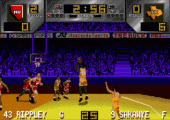
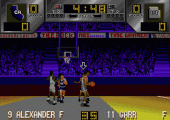
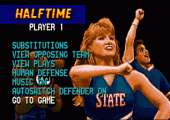
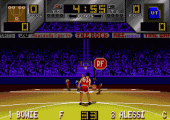
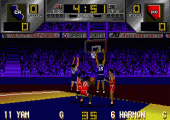
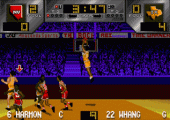
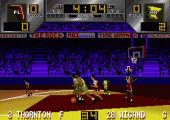
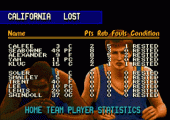
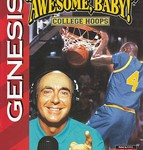
Recent Comments